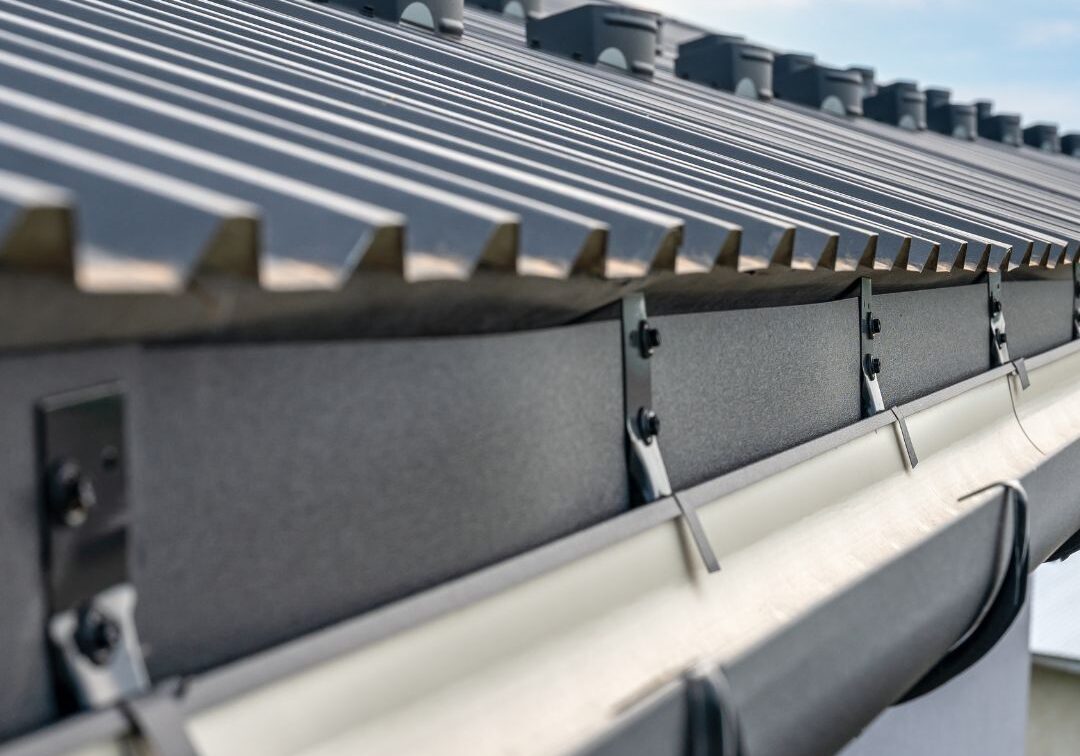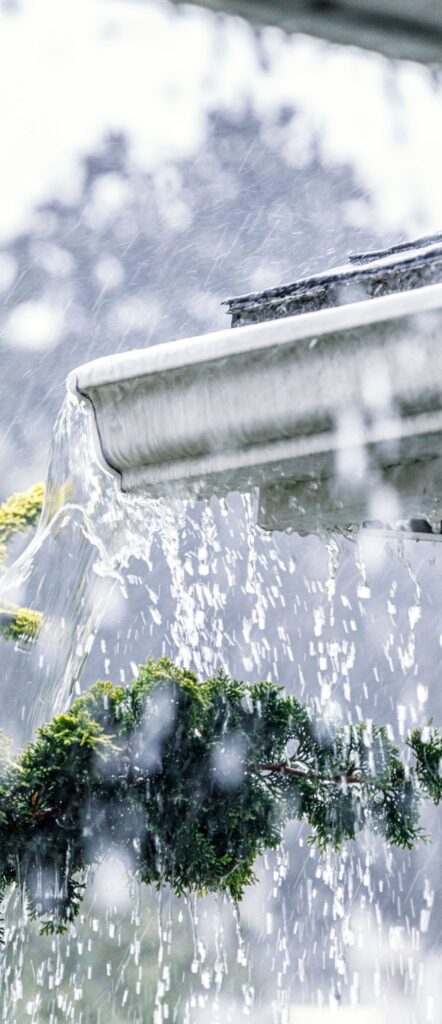Gutter Guards And Accessories

What Are Some Gutter Guards And Accessories?
Gutter Guards:
Gutter guards are protective covers designed to keep debris out of gutters while allowing water to flow freely. Some common types of gutter guards include:
- Mesh Gutter Guards: A fine mesh screen that keeps leaves and debris from entering the gutters while allowing water to flow through.
- Foam Gutter Guards: Made of foam material, these guards fit inside the gutter and block debris while allowing water to filter through the foam.
- Brush Gutter Guards: These feature cylindrical brushes that fit into gutters, preventing debris from settling inside while allowing rainwater to pass.
- Reverse-Curve Gutter Guards: These guards direct rainwater into the gutter while allowing leaves and debris to slide off the edge.
- Screen Gutter Guards: A type of metal or plastic mesh placed over the gutter to keep out larger debris while letting water pass.
 Gutter Accessories:
Gutter Accessories:
- Downspout Extensions: These are used to direct water away from the foundation, preventing pooling around your home.
- Gutter Hangers and Brackets: Essential for securing gutters to your roofline, preventing sagging or separation over time.
- Gutter Sealant: Used to seal joints and prevent leaks in your gutter system.
- Gutter Cleaning Tools: These tools, like gutter scoops or cleaning wands, help homeowners clean gutters without climbing ladders.
- Splash Guards: These prevent water from splashing out of the downspout and onto the ground, protecting landscaping or driveways.
Using the right gutter guards and accessories can help reduce the need for regular gutter cleaning and extend the lifespan of your gutter system.
Some gutter accessories to consider include:
Downspout Extensions
If your downspout is too close to your home, you may risk water damage to your foundation, siding, or landscaping. Downspout extensions direct water further away from your home to prevent moisture damage during heavy rainfall.
Hangers
Gutter hangers are essential when installing half-round gutters. They attach to the fascia boards, holding the gutter securely in place and ensuring proper alignment.
Rain Chains
Rain chains are decorative alternatives to traditional downspouts. They allow rainwater to flow down in a visually pleasing way and can help reduce erosion in your garden. These chains can enhance the aesthetic appeal of your home while managing water flow effectively.
Splash Blocks
Splash blocks are placed under the downspout to disperse the water away from the foundation and prevent erosion. They come in various decorative shapes, such as animals, leaves, or ponds, adding a functional yet stylish touch to your home’s exterior.
Fascia Board
The fascia board runs along the edge of the roofline, supporting the gutters while providing a smooth, finished look. It helps protect the roof's structure from damage by ensuring the gutters are securely mounted.
These accessories help optimize the performance of your gutters and can also enhance the overall appearance of your home.
Here are some important maintenance tips to help keep your gutters in top shape and protect your home from water damage:
Clean Regularly:
- Clean your gutters at least twice a year, in spring and fall.
- Remove leaves, twigs, and other debris to prevent clogs.
- Use a garden trowel or gutter scoop to remove debris efficiently.
Inspect for Damage:
- Look for cracks, leaks, or loose joints.
- Repair any damage as soon as you spot it to prevent bigger problems.
Check Downspouts:
- Ensure that downspouts are clear and directing water away from your foundation.
- Extend downspouts several feet from your home to avoid water pooling near the foundation.
Consider Gutter Guards:
- Gutter guards can reduce the frequency of cleaning.
- Choose a durable and effective type to minimize maintenance.
Trim Trees and Shrubs:
- Trim overhanging branches that can drop debris into your gutters, increasing the need for cleaning.
Professional Cleaning:
- If you find it difficult to clean your gutters, consider hiring a professional service to handle it for you.
By sticking to these maintenance steps, you can avoid expensive repairs and ensure that your gutter system remains effective in protecting your home.
When selecting a gutter contractor for your home, consider the following tips to ensure you choose a reliable and qualified professional:
- Look for a Licensed and Insured Contractor:
- Ensure the contractor holds the proper licenses for your area.
- Verify that they are insured to protect you in case of accidents or damage during the project.
- Check Reviews and References:
- Read online reviews on trusted websites to get an idea of the contractor's reputation.
- Ask for references from past clients to gauge the quality of their work.
- Get a Detailed Estimate:
- Ask for a comprehensive, written estimate that outlines the cost of materials, labor, and any potential additional fees.
- Make sure the estimate includes a timeline for completion.
- Warranties:
- Ensure the contractor offers warranties for both materials and workmanship. This will give you peace of mind if any issues arise after installation.
- Ask Questions:
- Don’t hesitate to ask about their experience, the type of gutters they recommend for your home, and any maintenance advice.
- A good contractor will be transparent and willing to provide clear answers.
By using these guidelines, you can confidently choose the right gutter contractor to install or repair your system. If you're looking for local contractors, we can connect you with trusted professionals to help with your gutter installation project.
Resources:
Here are nine signs that your gutters may need to be repaired or replaced:
- Cracking If your gutters have cracks, they won't be able to properly drain water, which defeats the purpose of having a drainage system. While small cracks can be fixed, multiple cracks might signal a bigger issue that requires a full replacement.
- Rust A little rust isn't usually a big problem. Since gutters are built to handle water, minor rust spots can be patched up. However, if there’s widespread rust or large affected areas, it's worth checking with a professional to see if it’s time for a replacement.
- Leaky or Separated Seals The spots where sections of your gutters connect are the most vulnerable. Check for leaks, separations, or sagging at the seams. If these seals are compromised, water might escape, preventing the gutters from directing water away from your home’s foundation.
During a rainstorm, make sure your gutters are directing water properly. If water spills out or clogs, you may be risking water damage inside your home. Take care of this quickly to prevent bigger issues.
- Paint Damage Water can damage your home’s exterior in unexpected ways. If you notice peeling or bubbling paint on your siding, it could be a result of water leakage from your gutters. If you find any paint damage, take a look at your gutters to see if they're the culprit. If you’re not sure, it’s a good idea to get a professional’s advice.
- Rotting Like paint damage, water leaking from faulty gutters can lead to rotting of your home’s siding, window frames, or doors—especially if you have wood siding. If you catch this early by repairing your gutters, you can avoid having to replace parts of your home’s exterior.
- Mold or Mildew Have you noticed any green or black discoloration on your walls or around the foundation? If your gutters aren’t working properly and water isn’t being directed away from the house, mold and mildew can form in places that used to be dry. This could be another sign your gutters need attention.
- Sagging Gutters If your gutters are sagging or visibly pulling away from the house, it’s a sign that they are no longer properly secured or are overburdened by debris and water. Sagging can prevent water from flowing correctly and may lead to further damage. It's often a sign that your gutters need to be replaced or professionally repaired.
- Overflowing Gutters Gutters that overflow during rainstorms are likely clogged with debris or simply too small to handle the amount of water. Overflowing gutters can cause water to spill over the sides, leading to water damage along your roofline, walls, or foundation. If cleaning doesn't resolve the issue, it may be time for replacement.
- Water Damage to Your Foundation If water is pooling around your home's foundation, it can be a result of your gutters failing to channel water away from the base of your home. This can cause serious foundation issues over time. Replacing or repairing faulty gutters is crucial to prevent costly foundation repairs and water damage to the basement or crawl space.
These signs indicate that it’s time to either repair or replace your gutters to protect your home from water damage and to ensure the longevity of your roof and foundation.
Maintenance is a Must.
By staying on top of regular gutter maintenance, including cleaning and inspections, you can avoid expensive repairs or replacements in the future. Additionally, it's crucial to address any potential issues promptly to avoid further damage to your home. Regular upkeep not only ensures your gutters remain functional but also prolongs their lifespan, protecting your property from costly water damage.
If you are noticing signs of wear, such as rust, cracking, or sagging, or if your gutters are no longer directing water effectively, contacting a gutter professional as soon as possible will help prevent major issues down the line. Taking care of your gutters now can save you both time and money in the future.
When ready for a gutter replacement or if you're unsure about the state of your current system, reach out to a reliable professional. We can help you connect with trusted gutter contractors in your area to ensure the job is done right the first time.



